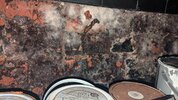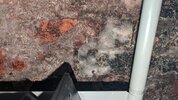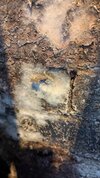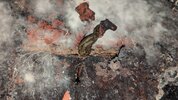- Joined
- 25 Nov 2021
- Messages
- 3
- Reaction score
- 0
- Country

I just bought a house in the East Midlands and discovered what looks like fungus growing on/in the outbuilding wall.
Is this dry rot, wet rot or something else?
I'm thinking to put an extra freezer in here but don't want to risk treading spores into the house if it can be avoided!
Thank you!
Background
-> Outbuilding is perhaps 80+ years old and does have some rot and old woodworm in the timber/tile roof
-> This wall is also the retaining wall for about 1.5m tall earth. The ground above is a vegetable patch, so this wall has lots of wet soil the other side
-> This side of the room was covered when viewing / doing surveys
Is this dry rot, wet rot or something else?
I'm thinking to put an extra freezer in here but don't want to risk treading spores into the house if it can be avoided!
Thank you!
Background
-> Outbuilding is perhaps 80+ years old and does have some rot and old woodworm in the timber/tile roof
-> This wall is also the retaining wall for about 1.5m tall earth. The ground above is a vegetable patch, so this wall has lots of wet soil the other side
-> This side of the room was covered when viewing / doing surveys
Attachments
-
 PXL_20241013_115338190.jpg413.8 KB · Views: 58
PXL_20241013_115338190.jpg413.8 KB · Views: 58 -
 PXL_20241013_114844726.jpg380.4 KB · Views: 52
PXL_20241013_114844726.jpg380.4 KB · Views: 52 -
 PXL_20241013_114439353.jpg342.6 KB · Views: 49
PXL_20241013_114439353.jpg342.6 KB · Views: 49 -
 PXL_20241013_114359757.jpg253.9 KB · Views: 58
PXL_20241013_114359757.jpg253.9 KB · Views: 58 -
 PXL_20241013_115402516.jpg375.4 KB · Views: 57
PXL_20241013_115402516.jpg375.4 KB · Views: 57 -
 PXL_20241013_115558032.jpg360.5 KB · Views: 54
PXL_20241013_115558032.jpg360.5 KB · Views: 54 -
 Screenshot_20241013-131041.png2 MB · Views: 54
Screenshot_20241013-131041.png2 MB · Views: 54

